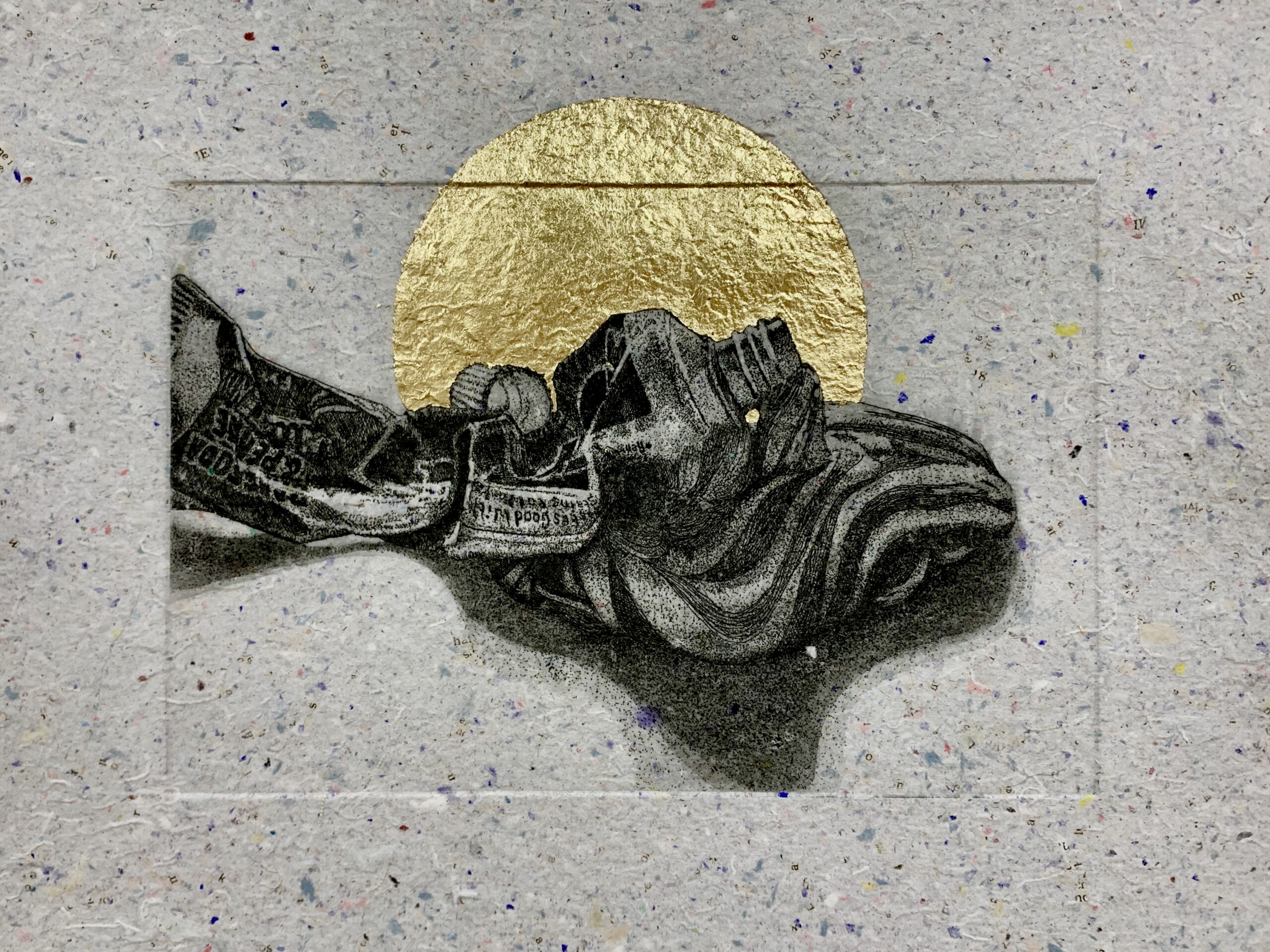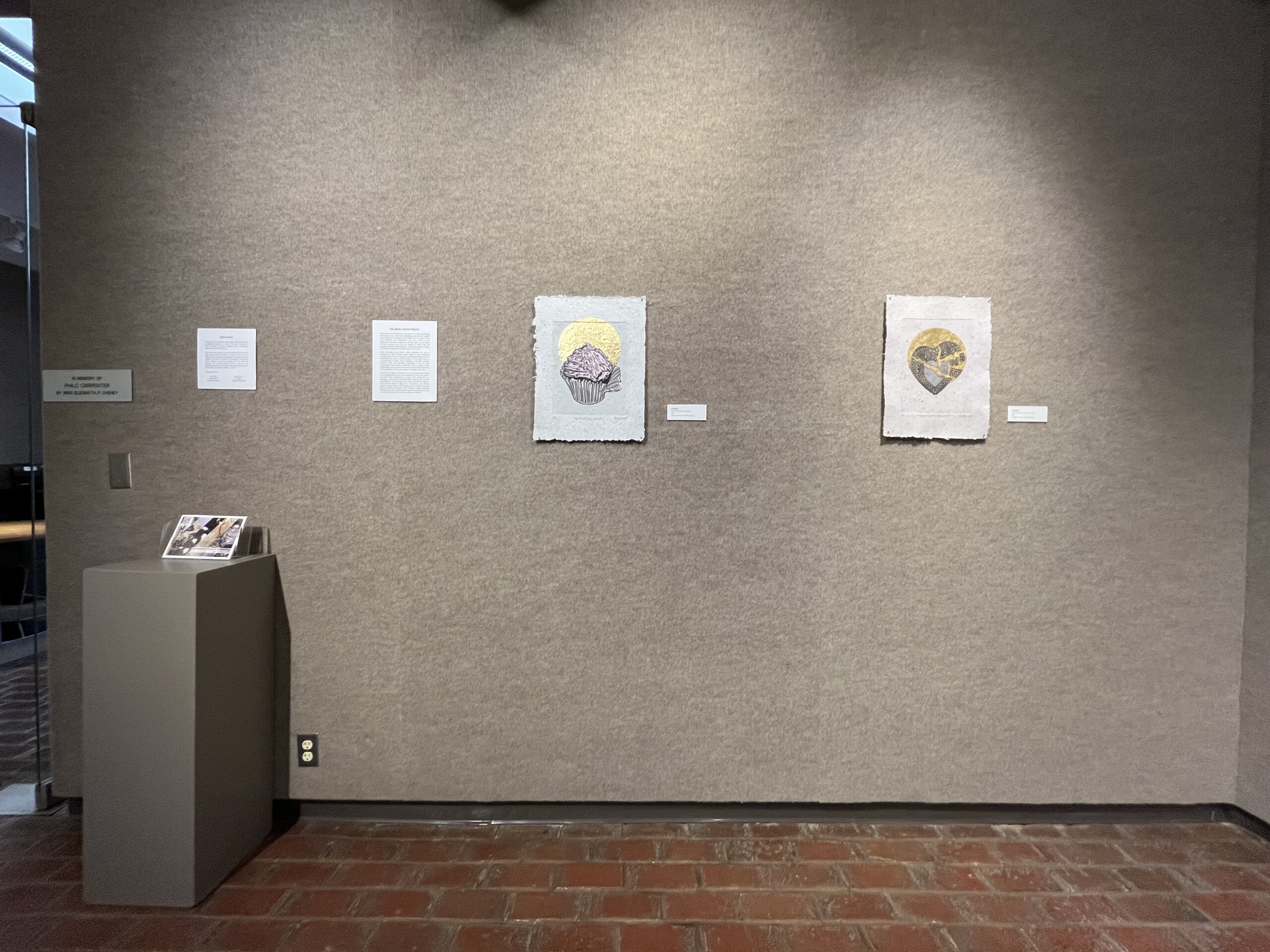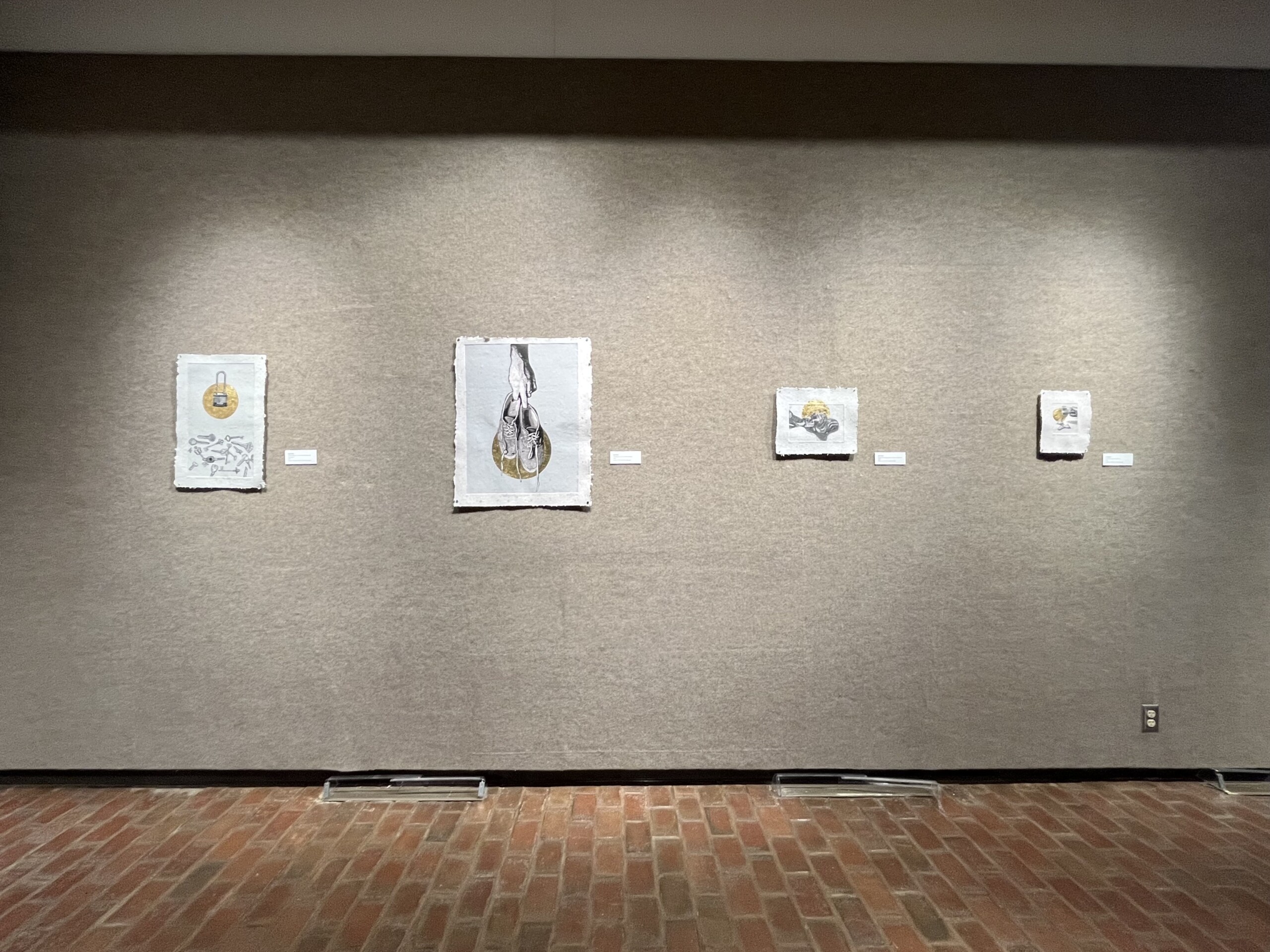Elsa Black: Tainted Objects
In the branch of Christianity that I was raised in, identity is something that is given to you, rather than something you pick yourself. Gender roles, particularly, are integral to the identity that I was given. There were limitations and expectations that were central to my socialization that were not placed on the boys I grew up with. Many of those limitations came from the concept of “purity” that was expected of myself, and the other girls. These pieces provide a critique of the Church regarding its attitudes about purity culture.
When promoting purity culture, certain metaphors are used as teaching aids. These metaphors allow adults to more comfortably compare girls to certain consumable and disposable objects that can be tainted by use, such as a licked cupcake, a torn-up paper heart, or a worn-out pair of shoes. These comparisons, used when teaching “purity” to girls, are consistently objectifying at best and often traumatizing. These lessons tie little girls’ worth as people to their sexual history, prior to many of them even knowing what that means; and the damage caused by this carries on throughout their lives.
Each of these images is a self-portrait. I am portraying myself literally as the damaged objects that I was compared to in the many lessons I was given about maintaining my “purity.” These self-portraits are intended to reflect some of the discomfort caused by this incessant objectification. A flat gold disc halo, usually reserved for images of saints and the divine in religious art, is included in each of these images to assign holiness to these objects that are often so carelessly given as identities to little girls. These “worthless” objects essentially transform into icons, empowering these girls to see themselves not as consumable things, but as inherently valuable individuals.






